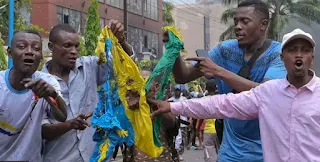Dear 222 News viewers, sponsored by smileband,
In a significant legal development, Meta Platforms Inc., the parent company of Facebook and Instagram, has agreed to pay approximately $25 million to settle a lawsuit filed by former President Donald Trump. The lawsuit, initiated in 2021, accused Meta and its CEO of violating Trump’s rights by suspending his social media accounts following the January 6 Capitol riot.
The suspension of Trump’s accounts in January 2021 was a response to concerns that his posts could incite further violence after the Capitol incident. In June 2021, Meta imposed a two-year suspension on Trump’s accounts, citing the potential risk of further incitement.
In early 2023, Meta reinstated Trump’s accounts but implemented heightened suspension penalties for any future violations of its community standards. However, in July 2024, Meta announced the removal of these heightened penalties, stating that all U.S. presidential candidates would be subject to the same community standards as other users.
The recent settlement concludes the legal dispute between Trump and Meta, with the company agreeing to the $25 million payment. This agreement underscores the ongoing challenges and debates surrounding content moderation, free speech, and the role of social media platforms in regulating political discourse.
Here are the key points from the case of Donald Trump winning $25 million from Meta:
1. Lawsuit Settlement – Meta agreed to pay $25 million to settle a lawsuit filed by Donald Trump over the suspension of his social media accounts.
2. Account Suspensions – Meta suspended Trump’s Facebook and Instagram accounts in January 2021 following the Capitol riot, citing concerns over incitement to violence.
3. Two-Year Ban – In June 2021, Meta imposed a two-year suspension on Trump’s accounts, after which it reassessed the risks of allowing him back.
4. Reinstatement in 2023 – Trump’s accounts were reinstated in early 2023, but Meta imposed stricter penalties on him for potential future violations.
5. Restrictions Lifted in 2024 – In July 2024, Meta announced the removal of heightened penalties, ensuring Trump and all presidential candidates would be subject to the same content moderation rules as other users.
6. Legal and Political Impact – The settlement highlights ongoing debates about free speech, content moderation, and the power of social media companies over political discourse.
Conclusion
The $25 million settlement between Donald Trump and Meta marks a significant moment in the ongoing debate over social media regulation, free speech, and corporate accountability. While Meta initially justified the suspension of Trump’s accounts as a necessary measure to prevent further violence, the decision faced strong opposition from conservatives who argued it was an act of political censorship.
The settlement not only closes this legal chapter but also underscores the challenges tech companies face in balancing platform policies with political neutrality. With the 2024 U.S. presidential election approaching, Meta’s decision to treat all candidates equally moving forward signals a shift in its approach to content moderation.
For Trump, the victory reinforces his long-standing claims of being unfairly targeted by big tech, bolstering his narrative ahead of his political comeback bid. Meanwhile, the case raises broader questions about the role of private companies in shaping public discourse and the potential need for clearer regulations governing digital platforms.
Attached is a news article regarding trumps 25 million for suspending his account from meta
https://www.nbcnews.com/news/amp/rcna189918
Article written and configured by Christopher Stanley
<!-- Google tag (gtag.js) --> <script async src="https://www.googletagmanager.com/gtag/js?id=G-XDGJVZXVQ4"></script> <script> window.dataLayer = window.dataLayer || []; function gtag(){dataLayer.push(arguments);} gtag('js', new Date()); gtag('config', 'G-XDGJVZXVQ4'); </script>
<script src="https://cdn-eu.pagesense.io/js/smilebandltd/45e5a7e3cddc4e92ba91fba8dc










